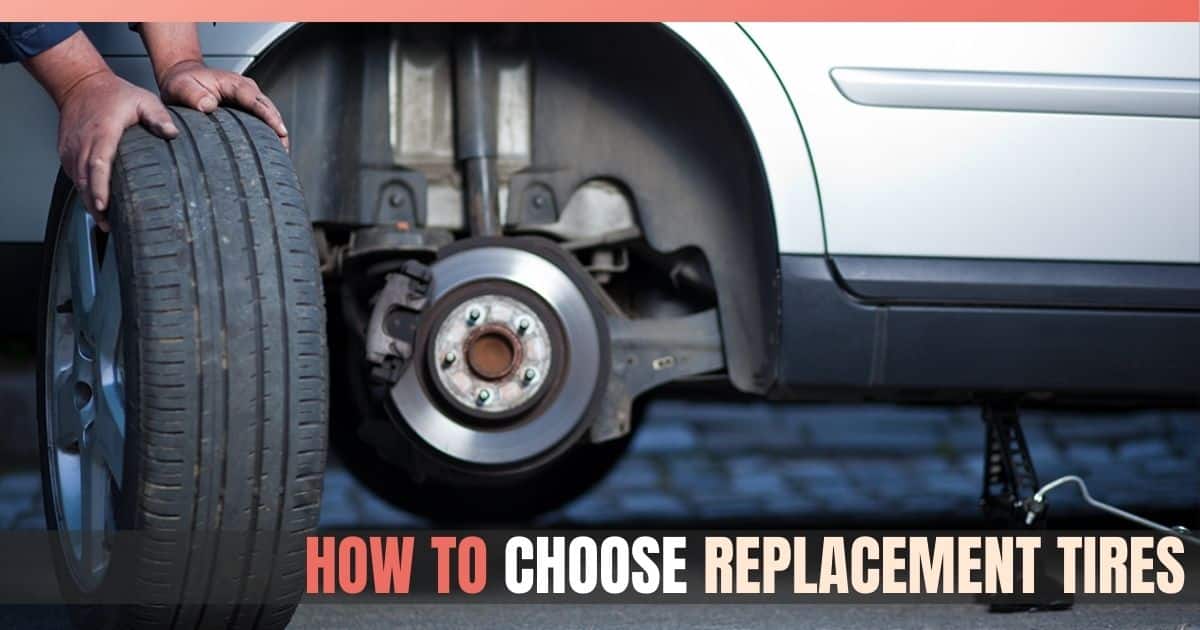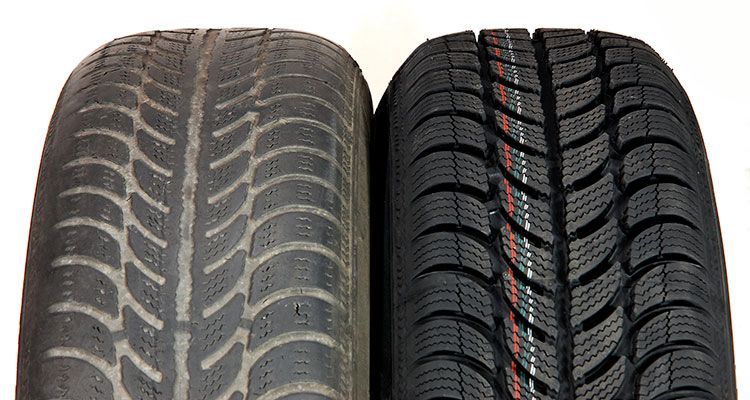
When you need a replacement tire, you may not be sure how to choose. Questions such as “do I need all 4 tread pattern to match”, “can I replace just one tire”, or “can i mix and match brands” typically come up. In this article we will address how to properly choose a replacement tire. You should also consider any guidance given in your vehicles owners manual.
Shopping for a Replacement Tire
Picking out tires to replace your current ones can be very subjective. Some people look for the cheapest possible deal, some look for top tire brands, others look for tires that match their driving style or for seasonal, and some may only buy those made in the USA.
No matter which type of shopper you are, there are truths that everyone should adhere to when choosing replacement tires. Use the questions below to help decide on choosing your set….
How to Choose a Replacement Tire
A good place to start for considering a tire is looking what manufacturer and model is currently on the vehicle. If you can afford to purchase the same make and model you are better off. This ensures that your replacement has the same tread, size, internal construction, performance attributes like speed rating and load capacity as your current tires.
If the same exact tire is not available consider matching a tire from the same performance category. This is matching tire size, speed rating, and load capacity. This can be done when you want to change how the tires perform. Perhaps you bought the vehicle in the northeast and it came with all season tires, if you have moved to dryer area you may want a tire that grips better in dry conditions. Sticking to the performance category metrics will be fine. You should never mix and match tires from different seasons.
Outside of the above, it is not a good idea to mix and match manufacturers or performance categories. It is ok in an emergency, but should not be a long term solution. This will lead to decreased fuel economy, an unbalance ride, uneven treadwear overtime, and reduce handling in bad weather, and reduce traction when braking.
Understanding UTQG
UTQG stands for Uniform Tire Quality Grading. It is a metric developed by the National Highway Traffic and Safety Administration in conjuntion with the Department of Transportation. The metric measures a tires tread life, temperature, and traction. Treadlife is measured numerically while, traction and temperature are graded from “A” to “C”, with “A” being the most superior. A tread life grade of 400 should last 2X longer then the treadlife on a tire rated 200.
The trouble with UTQG is that there is no independent 3rd party that grades the tires. The tire manufacturers themselves are the ones who grade their own tires. That makes comparing tires across the manufacturer efficient, but more difficult comparing different manufacturers. Either way it is a helpful number to review and use a guideline to understand how the manufacturer thinks the tire will perform.
Are Used Tires Safe For a Tire Replacement?
You can find used tires that are safe. You should however compare the pros and cons for both new and used tires. When you buy used tires you can find some with plenty of treadlife left and still in great quality. While you can save a ton of money, there are no warranties and government regulations to protect you from your purchase. The key to buying used tires is to do a thorough safety inspection of them and make sure they don’t have any shoddy repair work.
Can I Mix Tires on My Vehicle If I Only Need to Replace One?
In general you should not mix:
- Tires with different tread patterns or directional with non-directional tires.
- Tires with different Internal construction or sizes (unless front and rear staggered).
- Run flats and non-run flats.
- Summer or all season tires and winter tires.
- Tires that are not the same size or have the same load bearing index.
This is important because you want the tires to wear down at the same rate. Even wear across the tires is a sign that the vehicle is working correctly and in tandem with the maintenance practices. Generally it is better for fuel economy to have the tires match and will expand the life of all 4 tires simultaneously.
For the reasons above, I do not recommend replacing only one tire. That is fine in an emergency, but long term you should strive for uniformity. Replacing one tire is also ok if you are returning a vehicle at the end of a lease. In fact that is also a good time to consider saving money on a used tire instead.
Do All 4 Tires Need Replacement or Can I Replace 2?
Most people do not wear their tires down at the same rate. Sometimes tire wear comes down to how the weight of the vehicle is distributed, your driving style, different size tires on the front and rear axels, improper maintenance, and road conditions.
When all four tires don’t wear evenly and one or two need replacement, most tire shops will recommend replacing all four. That of course is really expensive. The benefits though are a smoother ride, better traction and handling, and increased balance. You can potentially consider just replacing two, which will reduce your cost in the short term. For replacing just two tires you will need to consider getting an exact match, an equivalent match, or something different.
If you are getting only two tirs you want to place them on the rear and then rotate your rear tires to the front. The purpose is to increase the traction in the back and reduce the risk of hydroplaning in wet conditions. Worn tires in the front are easier to compensate for as a driver.
Replacing Run Flat Tires…
If you are currently using run flats and need a tire replacement, most shops are going to tell you to replace all 4. This boils down to the fact that 70% of run flat tire manufacturers recommend that you do not repair a run flat tire. Since they recommend not repairing, introducing a new tire means uneven tread patterns on your vehicle.
The exception to this rule though is, if your tires don’t have a lot of miles on them and you end up needing to replace a run flat, you might be able to do just one.
Should I Consider Airless Tires?…
Airless tires are a new technology and they have their pros and cons. The trouble here is that you would need airless tires on all fours and a single airless tire is more expensive then a single standard tire. While these special tires never go flat and have better corning at slows speeds, the downside is they are expensive and offer a less conmfortable ride.
Choosing Replacement Tires – Conclusion
Tires play a critical role in your vehicles performance and your safety. They impact traction, handling, fuel economy, and the smoothness of your ride. It is ideal to drive on four identical tires of the same make, model, tread depth, and performance categories. Anything else you do you are begin to sacrifice the best circumstances. You should never replace just one tire, unless it’s an emergency, and you can replace two as long as you put them in the rear. Nothing is better then 4 exact matching tires though!
